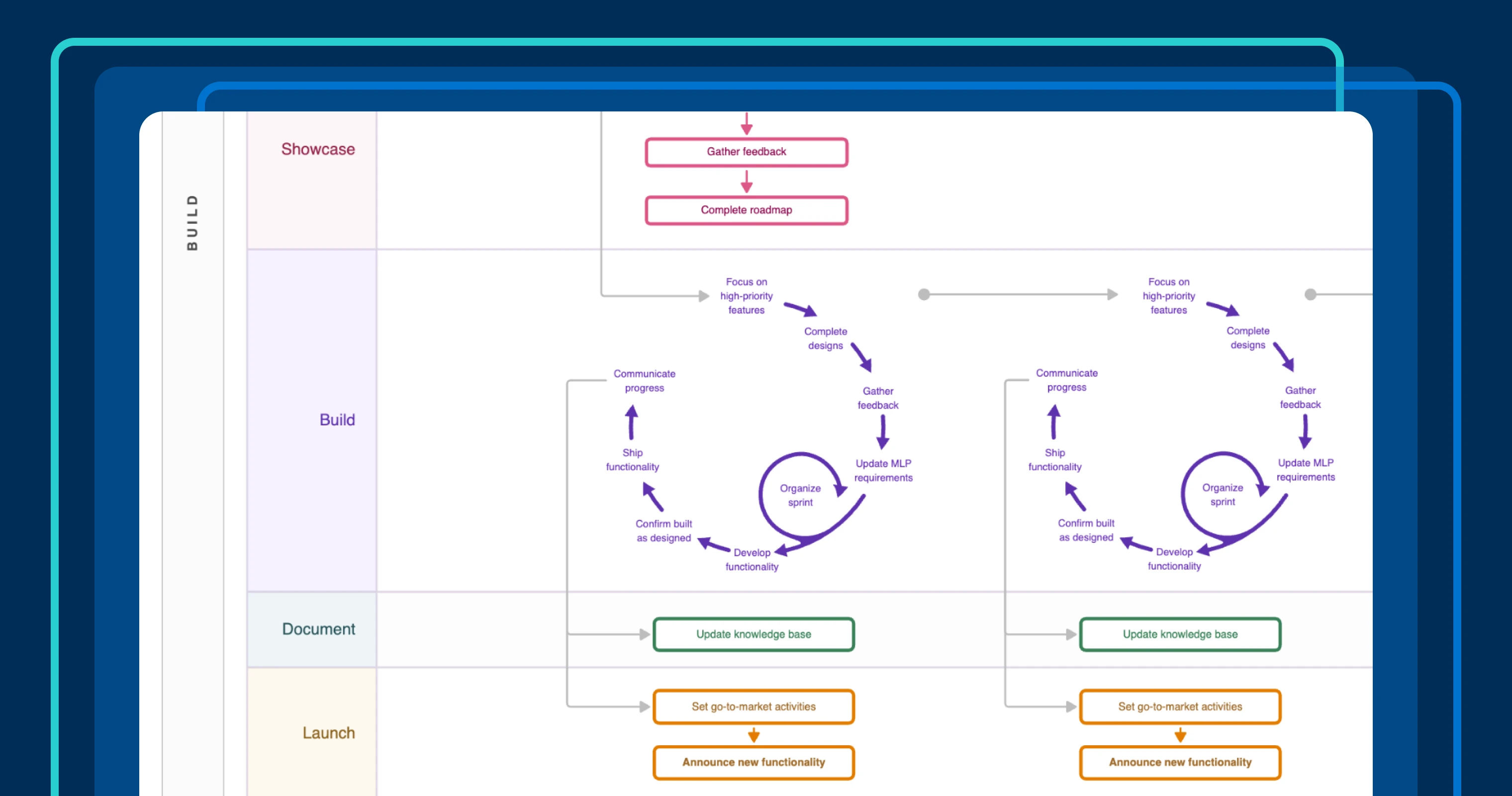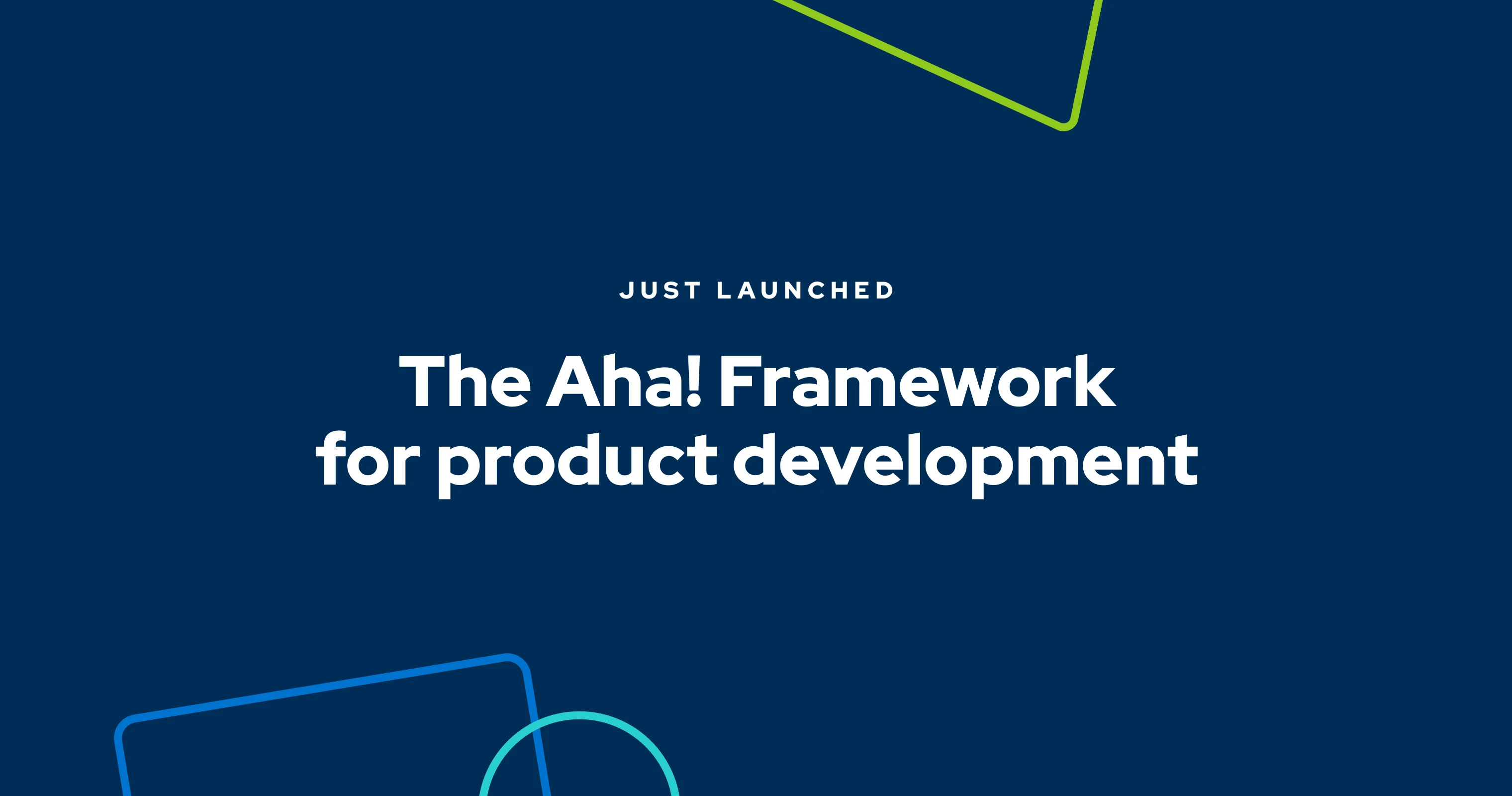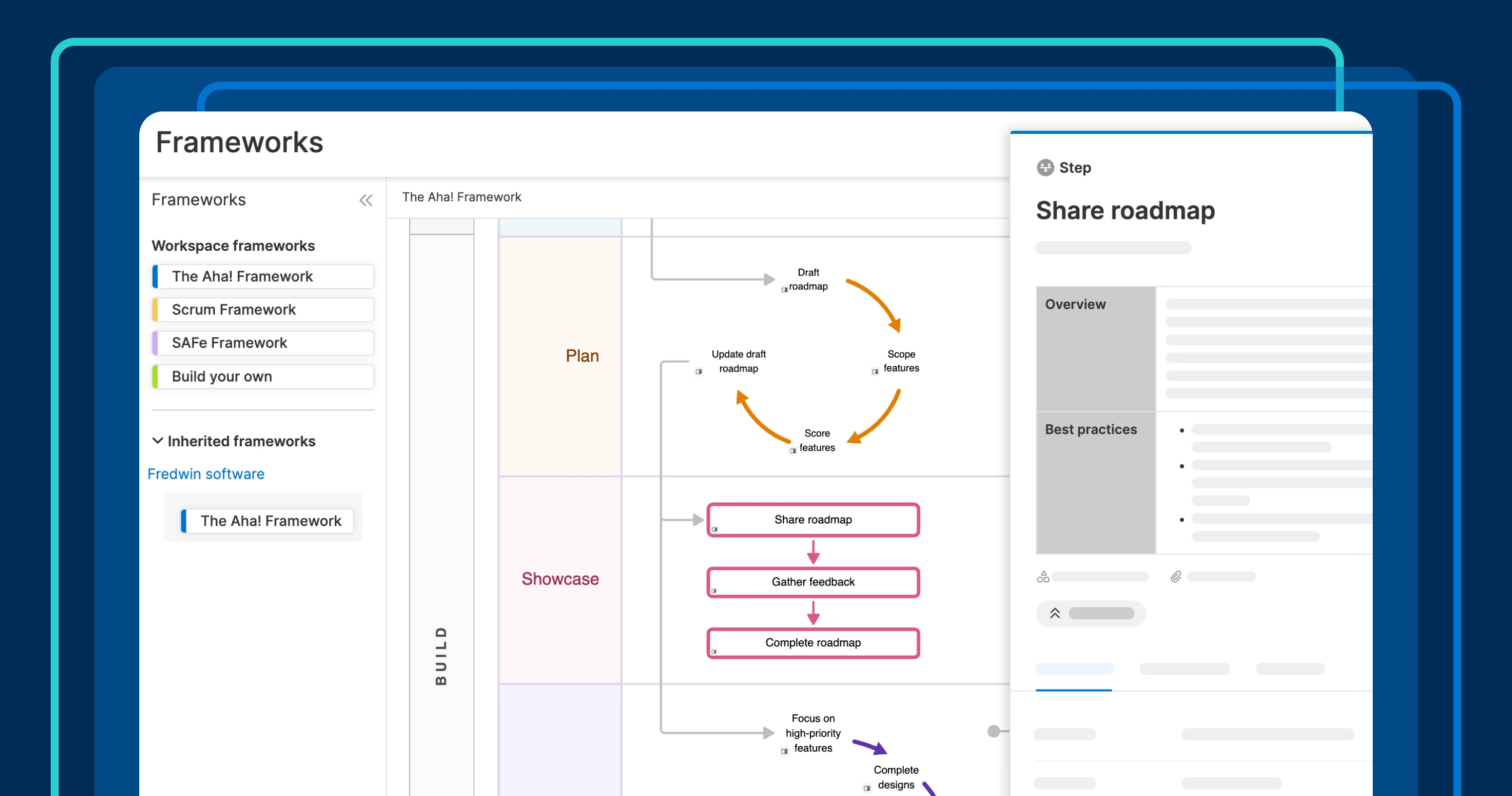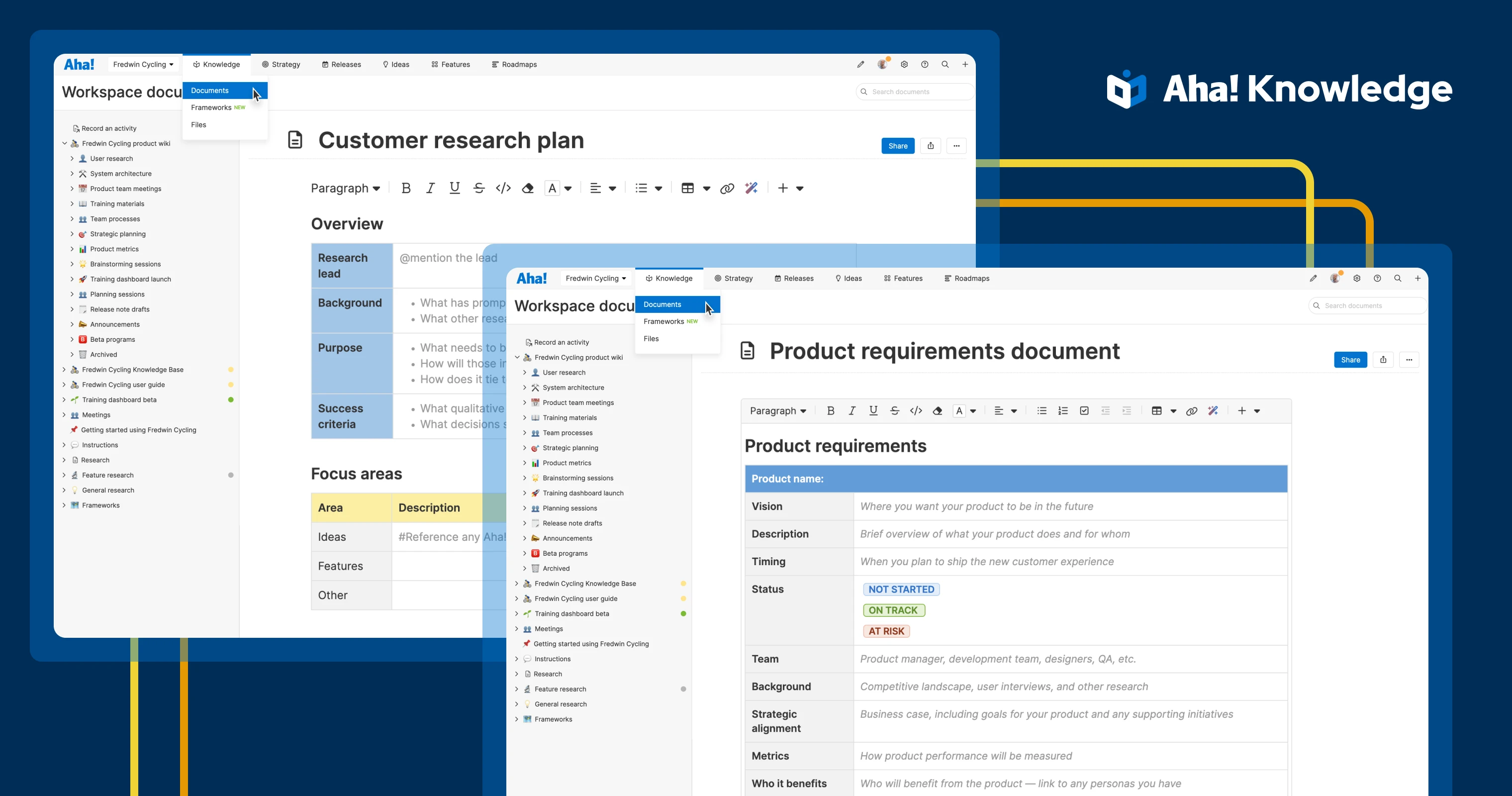
Balance strategic planning and agile delivery using The Aha! Framework
Following a strict plan vs. improvising — what do you prefer? Product development necessitates both. Goals and a structured plan bring clarity and a direction to move toward, but too much rigidity stifles incremental innovation and improvement. Being flexible gives you room to adapt based on new insights and customer needs.
Teams that can embrace this duality collaborate more effectively to build lovable products.
This is why we developed The Aha! Framework: a product development methodology that is both defined and adaptable. The framework starts with prescribed bi-annual strategic alignment and supports ongoing sprints and continuous deployments that are aligned with overarching strategy. We distilled its stages and activities based on more than a decade of experience helping customers of all sizes craft their roadmaps and use Aha! software across their product teams.
One thing is clear: Even the smartest product teams continue to struggle with standardization. Defining how to move from initial brainstorming to a well-defined strategy and product roadmap requires enormous coordination. Planning and refinement are ongoing — you must consistently realign on what is most important and will create real customer value.
If you are not familiar with The Aha! Framework, we put together an in-depth overview in our guide for product managers. And today, we are sharing even more details about the activities involved across each stage of the framework.
Unlike other product development methodologies, The Aha! Framework does not include copious ceremonies or unnecessary complexity. Its activities are easy to understand and adapt to your organization's needs.
Skip ahead to our new guide on the activities in The Aha! Framework or read below for a summary of its stages:
Stage 1: Strategize
Success begins with a clear vision and strategy. Regular strategic planning sessions ensure teams remain aligned with overarching goals.
Key activities in this stage include:
Define product vision
Review market conditions
Draft product goals
Identify key initiatives
Gather stakeholder feedback
Stage 2: Capture
Gathering feedback from customers, colleagues, and stakeholders is crucial. This is where an idea management tool is critical — so you can centralize, review, and prioritize feedback consistently.
Key activities in this stage include:
Review customer feedback
Review colleague feedback
Score ideas
Promote ideas to features
Stage 3: Explore
Ideas need refining before they can become viable features. In the exploration stage, use visual thinking and collaborative whiteboarding to brainstorm and wireframe potential solutions.
Key activities in this stage include:
Whiteboard new user experiences
Create wireframes
Gather feedback
Update wireframes
Stage 4: Plan
The plan takes shape. And now, it is time to transform your strategy and ideas into a clear roadmap.
Key activities in this stage include:
Draft a high-level roadmap
Scope features
Score features
Update draft roadmap
Stage 5: Showcase
Sharing your roadmap and gathering feedback is essential for alignment. This stage is about rallying support for your plan, addressing questions, and ensuring everyone understands the product direction.
Key activities in this stage include:
Share roadmap
Gather feedback
Complete roadmap
Stage 6: Build
Time to get busy! Organize and prioritize features, complete designs, gather feedback, and update requirements. The engineering team then brings these features to life through agile sprints.
Key activities in this stage include:
Start with high-priority features
Complete designs
Gather feedback
Organize sprints
Develop functionality
Confirm built as designed
Ship functionality
Communicate progress
Stage 7: Document
Proper documentation ensures everyone knows about new features and how to use them. Update your knowledge base and create tailored product resources for both customers and colleagues.
Key activities in this stage include:
Update knowledge base
Stage 8: Launch
At this stage, you get to share new functionality and drive adoption. Coordinate with the marketing team to communicate your product's value and inspire customers.
Key activities in this stage include:
Set go-to-market activities
Announce new functionality
Stage 9: Analyze
Analyze what worked and what did not. Track customer usage, feedback, and other metrics to assess realized value. Reflect on the development process to identify areas for improvement.
Key activities in this stage include:
Assess product value
Improve overall process
Although the activities above are listed in this specific order, the entire process is dynamic. Multiple stages typically happen at once across teams or products in a portfolio. Ready to dive deeper? Visit our new guide for detailed insights, templates, and video tutorials that will empower your team to excel at every stage of product development.
Product development software your entire team will love. Try Aha! software for 30 days.




